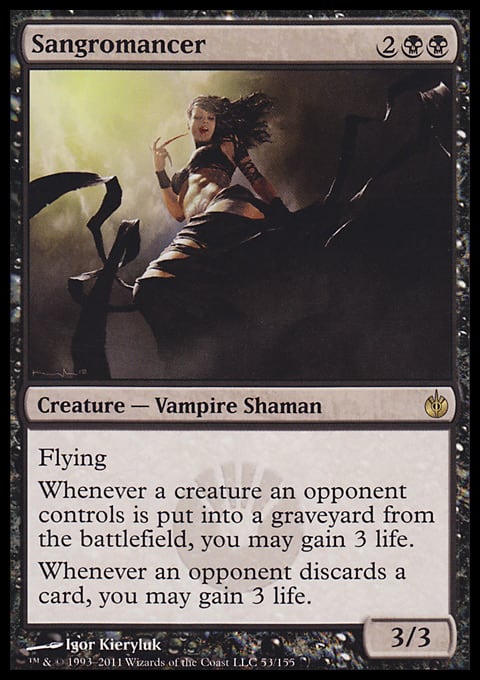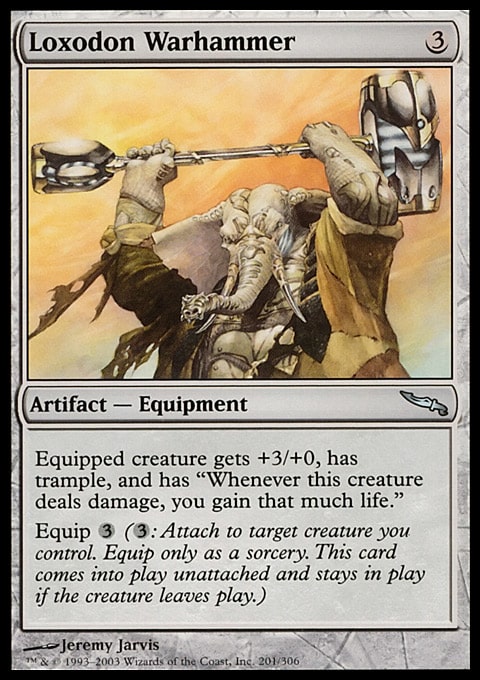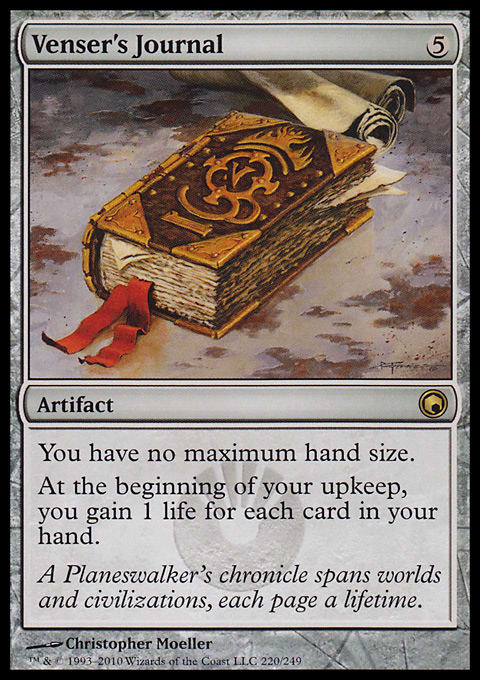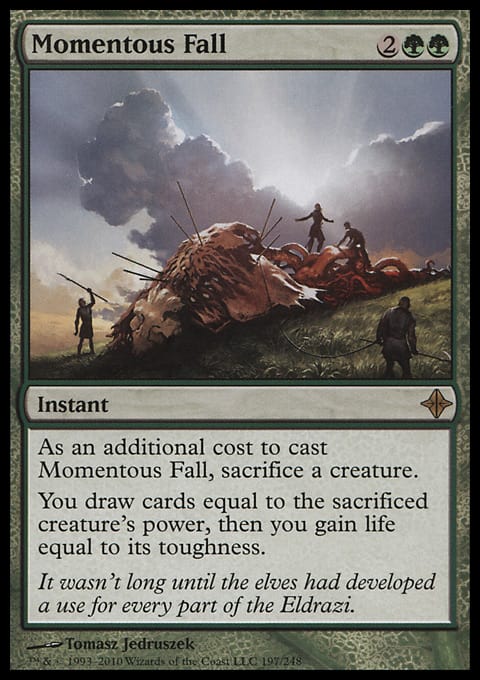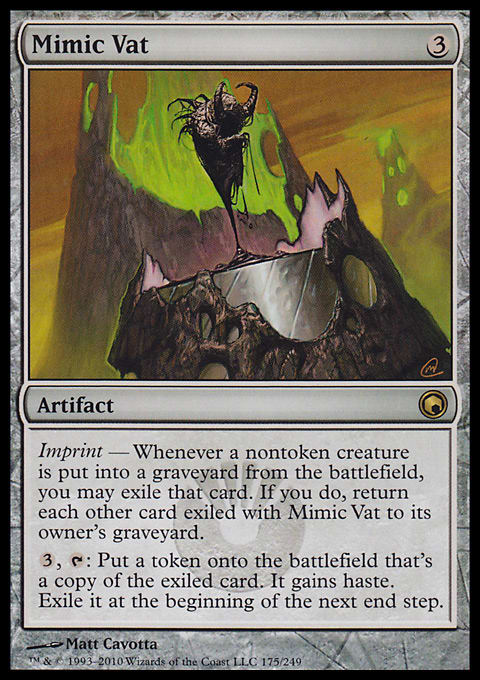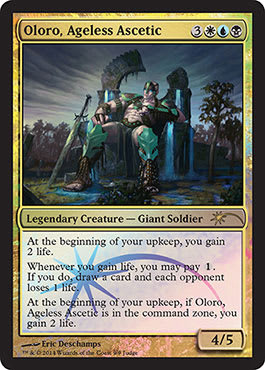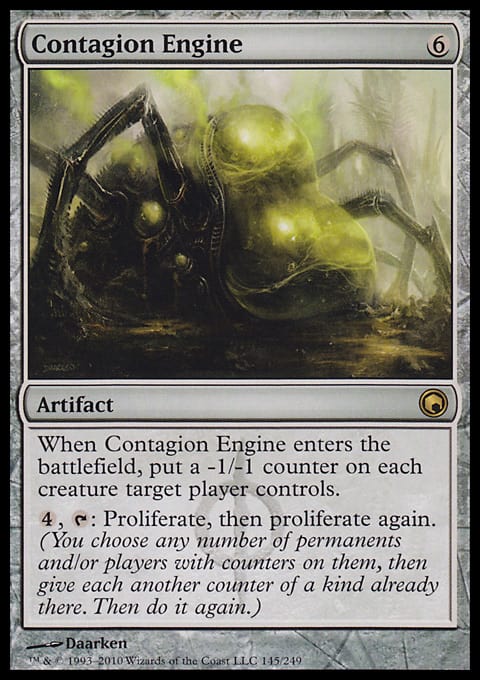Last week I talked about why I love it when a game goes long. Today I’m going to give some tips for how you can survive the long game and emerge victorious. In particular, I want to talk about how to apply Muhammed Ali’s infamous Rope-a-Dope strategy to multiplayer Magic, but before then we have to look at deck construction and basic strategy.
Built to Last
Have you ever had a game where you took a lot of damage early, then tried to recover but couldn’t because your life was too low? It’s a common scenario, and sometimes it happens because we don’t even have the cards in our deck to recover from early life loss. As bad as it is in duels, life-gain is vital in multiplayer, and it’s one of the key ways you can prepare for the long game when you’re deck-building. Nobody needs a triple-digit life score, but you can’t be sitting around on single digits for half the game either, because it is way too easy for an opponent to attack with a hasty fatty when your pants are down.
As a Black mage, I’ve always been a big fan of cards like Tribute to Hunger and Tendrils of Corruption; removal spells that can gain you a chunk of life at the same time. If you (try to) strike me down, I shall become more powerful than you can possibly imagine . . . or at least, a lot healthier than you! Another card that flies under the radar, so to speak, is Sangromancer. Keeping that on the battlefield for a few turns is guaranteed to gain you double-digit life; the last time I played her, someone cast Wheel of Fortune followed by Blasphemous Act, and I quietly ticked up my life total to 112 while everyone else was crying over their dead critters and discarded spells.
There are other options for everyone though. Even a single-minded Mono-Red aggro deck should consider a Basilisk Collar and Loxodon Warhammer, while a Mono-Blue control deck can find space for Ivory Tower or Venser's Journal. Green decks can add Sapseep Forest, Shamanic Revelation, and Momentous Fall, and everyone can ramp with cards like Pristine Talisman and Paradise Plume. Even the incidental life-gain from High Market can add up over a long game; just a few points of life can be a buffer between winning and losing.
Another thing to consider is recursion, or at least recycling. Recursion means getting cards from your graveyard to your hand or the battlefield, while recycling means putting cards from your graveyard back into your library to be drawn again. Recursion is clearly more powerful, but not every color is good at it. On the other hand, every color has access to recycling through artifacts like Elixir of Vitality1, and in the long game getting your bombs back can be a significant advantage. Figure out which cards will be central to your strategy, whether spells or permanents, then find a way to get them back (and hit me up on Twitter @the_casual_guy if you need ideas).
Patience, Grasshopper
In-game, one of the keys to victory is finding opponents to do your dirty work for you. Don’t get me wrong, you need to be willing and able to deal with threats yourself, but before you do, think about who else might be trying to deal with the problem. An opponent who is worried about someone other than you can be your most valuable resource in multiplayer.
Planeswalkers are a great illustration of this principle. If someone drops a Planeswalker, there is usually a rush to kill it, even if it is a relatively innocuous threat. You have to be a wary of proliferation and counter-doubling shenanigans these days, but the fact is most Planeswalkers die without going ultimate. As a general rule of thumb, if someone else has an attack step between me and the player with the Planeswalker, I give them an opportunity to get rid of it. Any time an opponent attacks another opponent’s Planeswalker, that’s an attack that isn't hitting me. Sometimes this backfires and I leave a Planeswalker alive for too long, but most of the time my patience pays off.
Another point to consider is that just hitting the most dangerous player doesn’t always help you in the short term. I wrote a whole article on this way back when, but the gist of it is this: hurting your opponents doesn’t necessarily make them less threatening. For example, if you have the only creature on the board and Adam plays a threatening permanent (e.g. Doubling Season, Cathars' Crusade, Mimic Vat), should you attack him? Unless you’re attacking with a Trygon Predator, hurting him doesn’t actually remove the threat. Putting him on lower life might make it easier to kill him later, but a couple of points of damage doesn’t do anything now. Attacking him might send a signal to the rest of the table that this person is The Threat and get them to join you, but it is also possible that you have a different effect, such as:
- Make other players reluctant to attack him because you’re already doing it
- Make people see you as The Threat because you’re being the most aggressive
- Make The Threat single you out for revenge2
That is why you should always pause and assess before going after the most dangerous player. If there is a chance that someone else will deal with a threat for you directly, then you will have more resources left for the long game.
Rope-a-Dope
One of the keys to winning a long game is being able to survive while another player is dominant. Sometimes one player has such a superior position that you don’t think you’ll ever be able to pull out a victory; the difference between a multiplayer master and a multiplayer muppet is being able to keep your head in the game long enough to weather the storm and find your answers. Much like Ali’s rope-a-dope strategy, you have to do just enough to protect yourself without using up all your resources.
I had a game recently that perfectly demonstrated how to do this. I was playing my Oloro Super-Friends deck against Breya, Etherium Shaper and Trostani, Selesnya's Voice. I thought I had it in the bag when I used Tezzeret's Gambit to proliferate my way to Sorin, Solemn Visitor’s emblem, but Paul and his Trostani deck had other ideas3. He got my Archon of Justice under his Mimic Vat and then each upkeep he was able to get an Archon token from the Vat, make a copy of the token with Trostani, then sacrifice the Vat token and exile the strongest permanent on the table. Between exiling at least one permanent a turn, gaining a ton of life, and beating down with his air force, he was well and truly in the driver’s seat. Then he played Avacyn.
I had a handfull of cards, but most of them were permanents and I knew that the best things I played would get exiled, so what to do? The main problem was the Mimic Vat, and I knew that I had answers in my library if I could just stay alive long enough to draw them. The trick was to identify the cards that would allow me to win once I got rid of the Vat, and then play out just enough of my hand to blunt his aerial assault and keep him from exiling the cards I needed most.
The most important card on my board was Contagion Engine. I knew that if I could eventually get more Planeswalkers out, the double proliferate would enable me to take over, but at the time I had nothing to proliferate. That was good, because Paul didn’t see it as an immediate threat, and so he didn’t target it with the Archon right away. Each turn I carefully played out one or two permanents that would present a more immediate threat and draw his fire away from my Contagion Engine. I knew I was going to lose some good stuff — I think he exiled Sharuum the Hegemon, Kaya, Ghost Assassin, Nim Deathmantle, Karmic Guide, and Oloro(a couple of times), while I was desperately trying to draw into an answer — but as long as my ultimate path to victory was safe, I didn’t mind. I was also playing as low-key as possible so that the Breya deck would stay alive and continue to draw some of the Archon’s exiling attention.
In the end, I was able to stay alive until Earl, the Breya playa, drew an answer to the Mimic Vat, then I took over. I recurred Sorin with a Profound Journey, used the Contagion Engine to pump him up to six loyalty and got another emblem. Then next turn I did it again! Without the Mimic Vat, three Sorin emblems were too much for the rest of the table to recover from. Then I played the pièce de résistance: the Sorin Markov that I’d been holding since turn three. Paul had triple-digit life after all of those turns pumping out tokens with Trostani, but Sorin erased it, and that was the game.
The lesson here is simple in theory but hard to execute. If someone else is in the driver’s seat, you have to:
- Wait for an answer—start by figuring out what cards in your deck can get you out of this mess. If you don’t have any answers yourself, think about which of your opponents are most likely to have an answer and try to keep them alive until they draw it.
- Don’t be their number one target—don’t play anything unless it will either turn the tide or keep you alive. Ideally, you should play out just enough of a defense that the dominant player thinks you're beaten, without actually letting them beat you.
- Think about what the board will look like after The Threat is dealt with, and hold on to the cards that will allow you to recover and adapt to that new situation.
Conclusion
Some decks are designed to find a combo as quickly and reliably as possible, but I've never found that kind of game enjoyable. My decks are usually designed to survive whatever you throw at me, then claw my way back from the edge and beat you to death — the John McClane school of deck-building. That means building in resilience, especially through recursion, recycling, and life-gain. In the early-to-mid game, I give my opponents as many opportunities to help me win as I possibly can. This means understanding who else is threatened by the things that scare me, and holding back removal until the opportune moment. When someone else takes over the game, which does happen occasionally, I use some version of the rope-a-dope, letting them exhaust themselves on my defense while saving as many resources as I can for the endgame. The great thing about long games is they give you lots of chances to be smarter than your opponents.
1 In white, one of my absolute favorite cards is Mistveil Plains. Recycling one card a turn might not make any difference, but there is very little opportunity cost, and you can sometimes win games just by being able to recast your all-star spells.
2 In theory, all of these outcomes should be unlikely because your opponents are rational enough to assess threats objectively, but in real life we all know people who make decisions on the basis of subjective factors (such as vengeance or a sense of fairness) rather than steely-eyed logic that you and I use.
3 Names have been changed to protect the innocent. But Paul isn't innocent.













